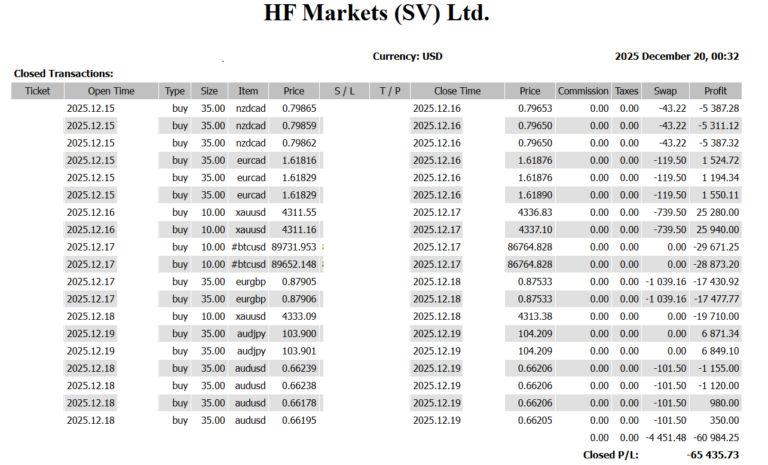✅ USD/JPY Surges to Upper ¥153s After U.S.-Japan Meetings — “High-Pressure Economy” under PM Takaichi and BOJ’s Caution Collide
💹 USD/JPY: Yen Selling Accelerates Post-Events, Hitting Highest Level Since February
USD/JPY briefly touched ¥153.89, marking its highest level since February.
With the FOMC and BOJ meetings now behind, yen selling and dollar buying momentum have re-emerged.
Federal Reserve:
-
As expected, the Fed decided on a 0.25% rate cut.
-
Chair Powell stated that “an additional rate cut in December is not a certainty,” tempering expectations for rapid easing.
-
The statement pushed U.S. yields and the dollar higher.
Bank of Japan:
-
Voted 7–2 to maintain the current policy.
-
Members Takata and Tamura proposed a 0.75% rate hike, but were in the minority.
-
The lack of broader hawkish support reignited yen-selling pressure.
🏦 BOJ Governor Ueda: “We Need a Bit More Data” — Market Reacts to Caution
During the post-meeting press conference, Governor Ueda remarked:
“The likelihood of achieving our economic and price outlook has increased, but we’d like to examine a bit more data.”
He added that while the core inflation rate is gradually rising,
there is “no heightened risk of falling behind the curve.”
This cautious tone led markets to scale back expectations for a December rate hike.
Bloomberg Survey (50 Economists): Rate Hike Probability
| Meeting | Probability of Hike |
|---|---|
| October | 10% |
| December | 50% |
| By January 2026 | 98% (almost unanimous) |
💴 Takaichi Administration’s “High-Pressure Economy” vs. BOJ’s Dilemma
Prime Minister Takaichi continues to advocate for an “active policy maintaining strong demand and employment,”
pursuing a “high-pressure economy” focused on growth stimulus.
As a result, the BOJ faces political pressure to maintain monetary easing,
making it increasingly difficult to justify rate hikes.
Analysts warn that this political-monetary balance could delay policy normalization,
introducing longer-term risks of policy lag and sustaining the yen’s downtrend.
🌍 Global Developments: U.S.-China Relations Improve; Focus Shifts to ECB
At the U.S.-China summit:
-
China postponed its rare-earth export restrictions for one year.
-
U.S. approved a large-scale purchase of Chinese soybeans.
President Trump hailed the results, saying they were “12 out of 10 points.”
The easing of geopolitical tensions offered short-term relief to markets,
though U.S. equities are showing mild signs of buying fatigue.
Attention now turns to the ECB meeting,
where rates are expected to remain on hold.
However, President Lagarde recently warned about “rising food inflation,”
raising the risk of a hawkish tone shift.
📊 Key Indicators for Today
| Region | Indicator | Focus |
|---|---|---|
| 🇫🇷 France | Q3 Real GDP Flash | Signs of slowing growth |
| 🇩🇪 Germany | Employment & CPI Flash | Monitoring for stabilization |
| 🇪🇺 Eurozone | Sentiment & GDP Flash | Clarity on recovery path |
| 🇲🇽 Mexico | Real GDP Flash | Continuing slowdown trend |
| 🇿🇦 South Africa | September PPI | ZAR reaction in focus |
💱 London Session Overview
| Pair | Current | Comment |
|---|---|---|
| USD/JPY | 153.71 | Yen selling resumes, testing February highs |
| EUR/JPY | 178.53 | Cross-yen buying accelerates |
| GBP/JPY | 202.95 | Yen weakness drives fresh highs |
| EUR/USD | 1.1640 | Directionless ahead of ECB meeting |
✅ Summary
The Fed’s rate cut combined with the BOJ’s policy hold triggered simultaneous dollar strength and yen weakness.
Governor Ueda’s cautious stance revived short-term yen selling pressure.
USD/JPY is trading in the upper ¥153s, with potential to test ¥154 next.
Key Focus Ahead:
🕵️♂️ Whether Ueda signals a rate hike at the next meeting
🏦 The ECB’s tone — does it turn hawkish?
📉 Whether U.S. stocks enter a correction phase
👉 With Takaichi’s pro-growth policy and BOJ’s caution intersecting,
USD/JPY may continue oscillating between high-level caution and dip-buying demand.


